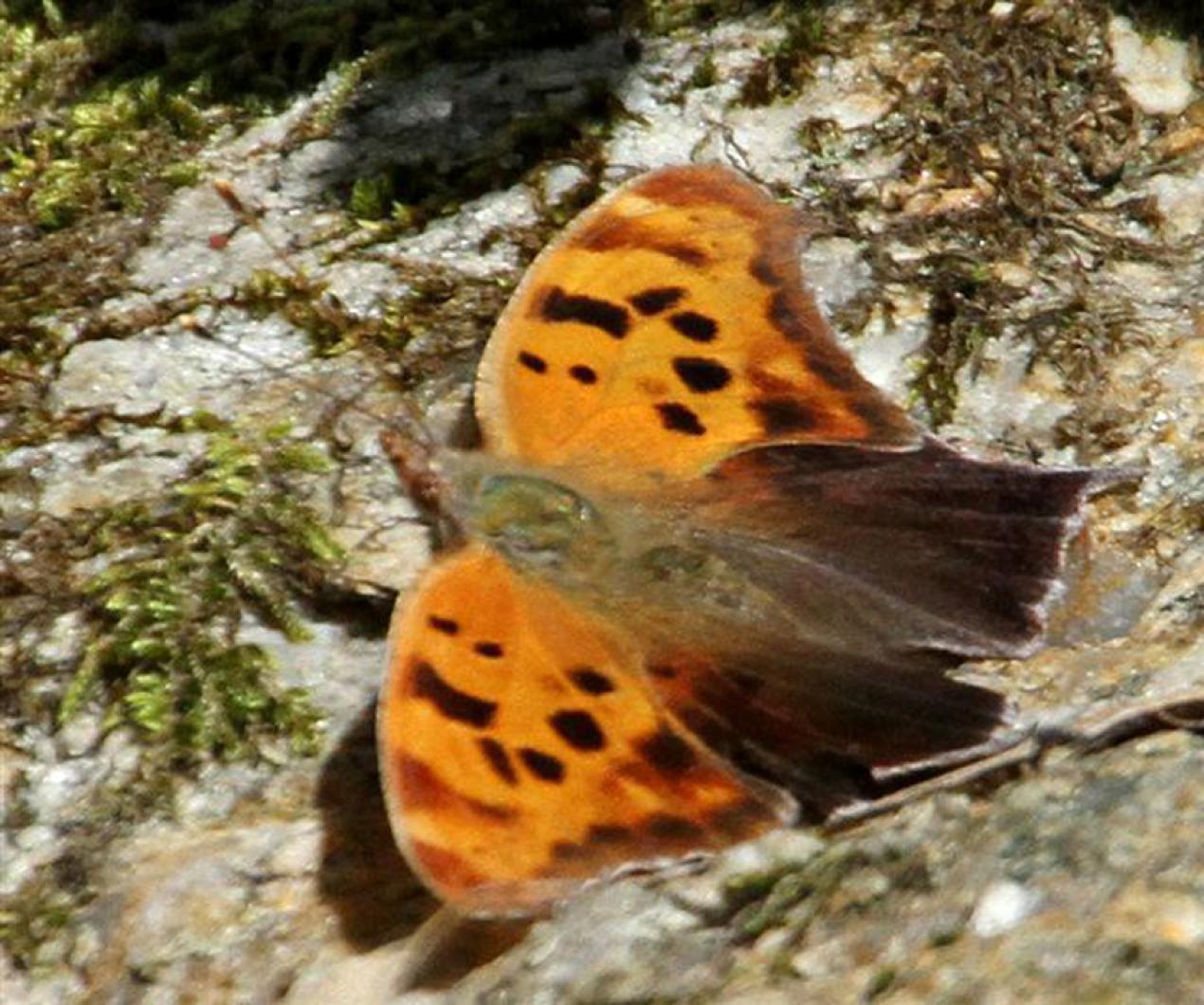My activities last weekend were punctuated with exceptional beauty.
During Felix Neck’s annual bird-a-thon fundraiser this past Saturday, my mission was to find and identify as many birds as possible. Somehow, though, my attention got diverted to other winged wonders.
Butterflies were out in full force, but there were two species in particular that made me pause — as punctuation often does. The insects in question were the comma and question mark butterflies.
With names that like that, you can mark my words, you will not forget these unusual butterflies.
A description of these insects will explain their unique names. Both species are in the genus Polygonia, which means many angles. These butterflies have angular notches and scalloped edges along their wings, and are also called angle-winged butterflies.
Commas and question marks are similarly colored. When their wings are open, the upper wings are red-orange with black spots and the lower are dark brown to black. When closed, those wings disappear into the background. Cryptically colored to resemble dead leaves, they are difficult to spot when resting on vegetation. Their distinguishing mark is the curved line on the underside of their hind wings; one species having a curved line resembling a comma, while the other has a comma and a dot, thus its designation as question mark.
Differentiating them can be challenging, but there are some additional clues if you can’t make out their petite punctuation. The question mark has four black spots on the upper wings, in contrast to three for the comma, and the question mark’s wings are edged in white. If you are flummoxed by the details, just wing it when it comes to identification!
Both of these migrating species showed up early this year and have been present for the last few weeks in large numbers. Both are described as friendly butterflies because they often will alight on the patient observer.
But they are not as likely as other butterflies to land on the flowers in your yard. Commas and question marks prefer to feed on carrion, fruit, tree sap, and even manure. Flowers will only do in a pinch for their meal.
The caterpillars of these species dine differently than when they are in their butterfly form. They eat a variety of leaves, but especially enjoy hops. For this predilection, the comma has also become known as a fortune teller of sorts. Farmers call it the hop merchant, claiming that they can predict future prices of hops based on the variations in the silver and gold spots that will appear on the comma’s pupa after it begins to metamorphose — once again, reading the fine print on these tiny texts.
Once the butterfly emerges, look for both species on plants and tree bark, rather than on flowers. With their angular physique and curious names, they will certainly add a dash of poetry to your surroundings; tree, comma, branch, comma, plant, question mark. Rarely does nature spell things out for us, or punctuate our day, so charmingly.
Period.
Suzan Bellincampi is director of the Felix Neck Wildlife Sanctuary in Edgartown.




Comments
Comment policy »